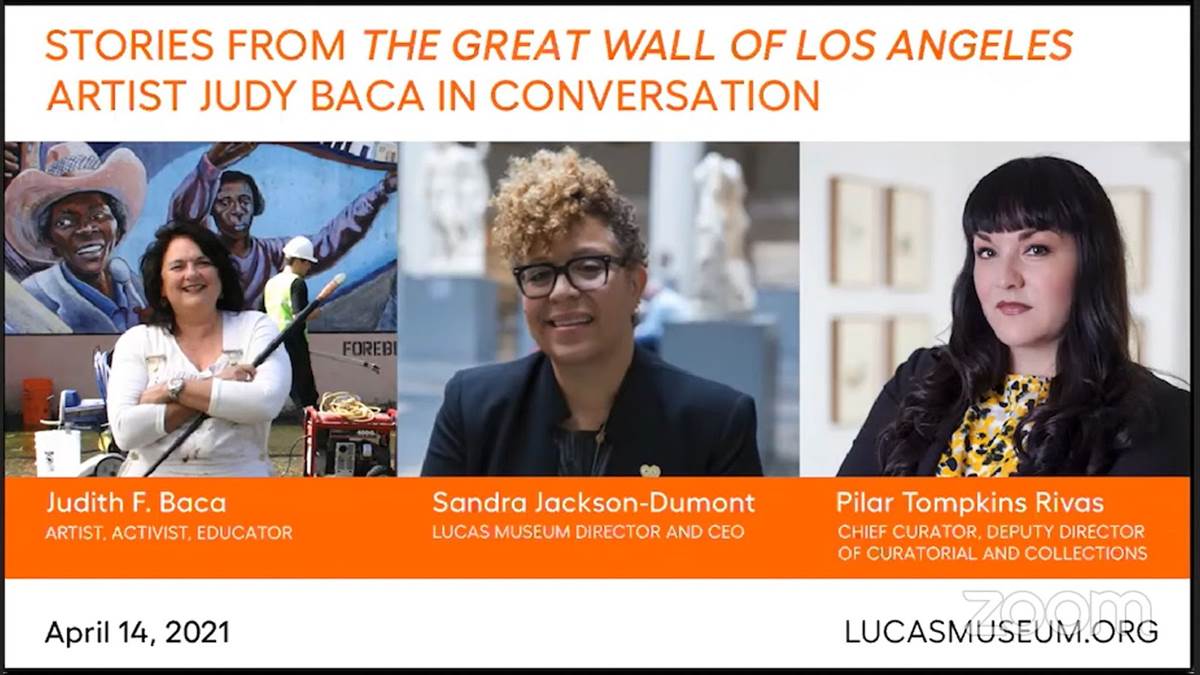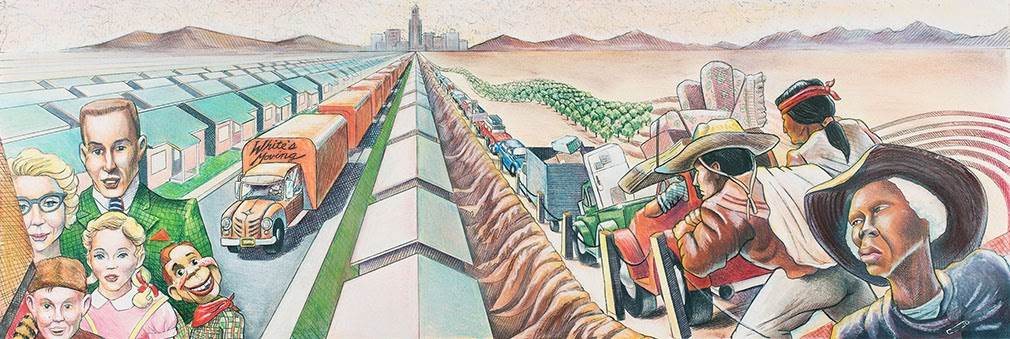At the end of March, Los Angeles’s highly anticipated and currently-under-construction Lucas Museum of Narrative Art announced a new acquisition entitled The History of California (more commonly known as The Great Wall of Los Angeles) by artist Judith F. Baca.
And this evening, the Lucas Museum held a virtual talk featuring Judy Baca in discussion with museum director and CEO Sandra Jackson-Dumont and chief curator Pilar Tompkins Rivas about the half-mile-long artwork, which will be honored in the museum’s The History of California archive– a collection of “more than 350 objects related to the mural’s development and execution, including blueprints, concept drawings, mural studies, site plans, sketches, and notes and correspondence.” In the bullet-point list below, I've enumerated many of the most interesting factoids and tidbits of information to come out of this presentation.
- Baca was recently awarded a sizable grant to expand the scope of this mural project.
- The Great Wall of Los Angeles is located in the Tujunga Wash area of Los Angeles.
- The mural depicts the history of Los Angeles from pre-history through the 1950s.
- Baca says the narrative form of muralism is very powerful because it takes art to the places where people live and work. “You can see something that is about the story of your own community.”
- She wanted to make something that reflected her own family and life experience, and was inspired by local graffiti artists documenting their own cultures and identities.
- Rivas was inspired by murals as a form of history-telling. She wanted to think about how art could be used for social chance and could be made accessible outside of museums.
- Baca talked about the importance of maintaining an archive of her work. A fellow artist friend told her she had to document and preserve her own history. “As I organized that material, I started to see the value.”
- She was inspired by the 1977 movie Close Encounters of the Third Kind to depict an alien spaceship landing in Los Angeles.
- She wanted the mural to be from the perspectives of various peoples in Southern California.
- She interviewed one of the few remaining members of the “Fighting 442nd” Infantry of Japanese soldiers who fought in World War II after coming out of American internment camps.
- People corrected Baca along the way on her use of certain terms and depictions of history in the mural.
- Rivas says the mural represents an interwoven dialogue between groups who are still fighting to tell their stories after decades of underrepresentation. “There’s a power in focusing a museum on narrative so that we can address this directly.”
- Jackson-Dumont says the museum is intent on dismantling the perceived barriers between “high” and “low” art.
- Baca says her murals were not thought of as art for a very long time. She was called a youth worker and an educator before she was acknowledged as an artist. “I remember saying to myself ‘I don’t want to be in the mainstream. I want to overcome the mainstream.’”
- Rivas says Baca’s work is now considered benchmark, cornerstone material necessary in understanding Chicana art.
- Baca draws a comparison between white supremacists who attacked her murals two decades ago and the insurrectionists who invaded the US Capitol building in January.
- Rivas says the fact that the mural has been around so long provides a groundwork for today’s social justice movements.
- Baca talks about the history of the LA River near where she grew up and the metaphors she saw in its complicated evolution. “Why don’t we tattoo the scar of where the river once ran?”
- The presentation ended with Baca talking about what we can expect from the next sections of the mural. She talked about how it’s a very dangerous site and the weather conditions have changed dramatically, so the artists will be working interiorly to paint each new section and then adhere them to the channel one by one.
- “I think the Lucas Museum has the possibility of absolutely changing the story and future of Los Angeles,” says Baca.
Watch Stories from "The Great Wall of Los Angeles": Artist Judy Baca in Conversation:
The Lucas Museum of Narrative Art is currently under construction in Exposition Park, Los Angeles and scheduled to open in 2023. For more information, be sure to visit the museum’s official website.


